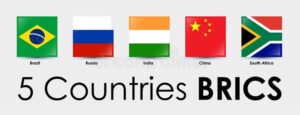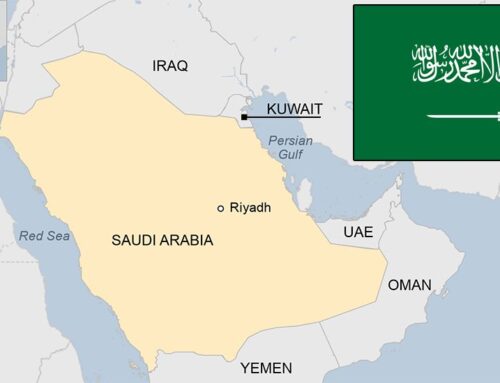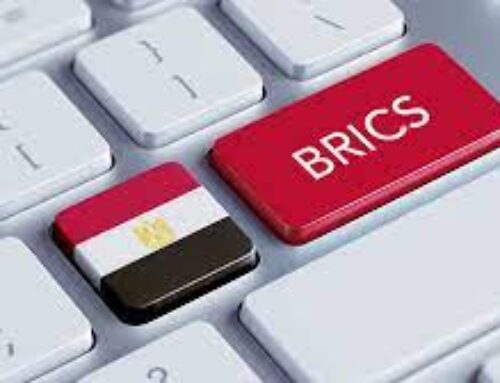
The inclusion of Iran in the BRICS group is a significant development in the realm of international geopolitics and economics. For years, Iran has faced a series of crippling sanctions imposed by various nations and international organizations, impacting its economy and people. This blog post explores the history of sanctions against Iran and examines how the country has managed to weather these challenges and achieve economic resilience in recent times. in this series, I wrote about Argentina and Egypt‘s entry into the BRICS
I. The Sanctioned Past
Iran’s tryst with economic sanctions began several decades ago, primarily due to concerns surrounding its nuclear program and alleged support for terrorism. The United States and the European Union, in particular, initiated numerous sanctions to curtail Iran’s economic activities. These sanctions had a profound impact on the country’s economy, resulting in the devaluation of the Iranian Rial and hampering foreign trade.
- Nuclear-Related Sanctions
The roots of Iran’s economic sanctions can be traced back to the concerns over its nuclear program. The United States, supported by the United Nations and Western allies, imposed sanctions on Iran to halt its nuclear activities, particularly those that could be weaponized. These measures had far-reaching consequences, both for Iran’s economic well-being and its global reputation.
The nuclear-related sanctions targeted various aspects of Iran’s economy, including:
- Restrictions on International Trade: The sanctions heavily restricted Iran’s access to international financial systems and trade partners, making it exceedingly difficult for the country to engage in global commerce. As a result, Iran faced a sharp decline in imports and exports, impacting its economic growth.
- Oil Exports: Iran is a significant global player in the oil industry, and sanctions significantly affected its ability to export oil. Many countries ceased purchasing Iranian oil, which was a critical revenue source for the nation. This had an immediate and severe impact on Iran’s economy, causing substantial revenue losses.
- Banking and Financial Sanctions
In addition to the sanctions targeting its nuclear program, Iran also faced banking and financial sanctions. The U.S. and its allies excluded Iranian banks from the SWIFT network, which is the backbone of international financial transactions. This exclusion made it exceptionally challenging for Iran to engage in global finance and trade, further damaging its economic prospects.
The financial sanctions had multiple effects, including:
- Foreign Investment Hurdles: Iran’s economy, like any other, relied on foreign investment to fuel its growth and development. However, with financial sanctions in place, it became unattractive for foreign investors to engage with Iran, which significantly impeded economic development.
- Currency Devaluation: The isolation of Iranian banks from the global financial system led to the devaluation of the Iranian Rial. The decline in the value of the national currency resulted in rising inflation and a lower standard of living for the Iranian population.
- Humanitarian Impact
While the sanctions were primarily targeted at the Iranian government’s activities, their impact was felt by ordinary Iranian citizens as well. The measures adversely affected access to essential goods, medical supplies, and humanitarian assistance. The sanctions’ humanitarian consequences raised significant concerns and led to debates about their ethical implications.
The unintended humanitarian consequences included:
- Medical Supply Shortages: Access to critical medical supplies and medications became a challenge, leading to increased suffering and potentially preventable health issues.
- Impact on Vulnerable Populations: Vulnerable groups, including children and the elderly, faced greater hardships as a result of the sanctions, drawing attention to the human cost of economic sanctions.
II. Iran’s Economic Resilience
Despite the adversity created by sanctions, Iran has demonstrated remarkable economic resilience in recent times. This resilience can be attributed to various factors and strategies adopted by the Iranian government and its people.
- Diversification of Trade Partners
In the face of sanctions, Iran decided to diversify its trade partners. This strategic decision allowed the nation to circumvent sanctions imposed by the Western world, particularly the United States and the European Union. Iran’s deepening ties with countries like Russia and China have played a crucial role in this diversification strategy.
Iran’s diversification of trade partners was instrumental in:
- Reducing Dependence on Western Markets: By establishing stronger trade relationships with non-Western nations, Iran decreased its reliance on Western markets, which had been significantly impacted by the sanctions.
- Securing Alternative Sources of Investment: Iran’s expansion of trade partnerships also opened up new avenues for foreign investment, particularly from Russia and China, which played a pivotal role in sustaining its economic growth.
- Oil Sector Adaptation
As an oil-dependent economy, Iran was acutely aware of the impact of sanctions on its oil industry. To counteract the effects of sanctions, Iran began to explore alternative markets for its oil. Traditional Western oil buyers reduced or ceased their purchases, prompting Iran to find new customers and strengthen its oil sector.
Iran’s adaptation in the oil sector involved:
- Exploring Alternative Markets: Iran turned to countries such as India, China, and Turkey to offset the loss of traditional Western oil buyers. These new markets helped maintain a vital revenue stream for the country.
- Investment in Domestic Oil Production: Recognizing the importance of the oil industry in its economy, Iran made significant investments in domestic oil production and infrastructure, ultimately increasing its capacity to produce and export oil.
- Domestic Production and Self-Sufficiency
A key component of Iran’s strategy for achieving economic resilience was the focus on increasing domestic production. By reducing its dependence on imports and bolstering various sectors, such as agriculture and manufacturing, Iran aimed to enhance self-sufficiency and create job opportunities for its citizens.
The emphasis on domestic production and self-sufficiency resulted in:
- Reduced Reliance on Imports: By producing more goods within its borders, Iran aimed to reduce its dependence on imports, thus mitigating the impact of economic sanctions.
- Job Creation: Investments in various sectors, including agriculture and manufacturing, not only improved self-sufficiency but also created job opportunities, thereby bolstering the Iranian workforce.
- Cryptocurrency and Barter Trade
The Iranian government explored unconventional methods to bypass traditional financial sanctions. In doing so, Iran used cryptocurrencies and engaged in barter trade agreements with various countries. These strategies allowed Iran to maintain economic activities and trade relationships, even in the face of restrictive financial measures.
Iran’s innovative financial approaches included:
- Cryptocurrency Use: Iran leveraged cryptocurrencies, such as Bitcoin, to facilitate international transactions. Cryptocurrency provided a means to work around traditional banking restrictions.
- Barter Trade Agreements: Iran entered into barter trade agreements with countries, particularly those facing economic sanctions themselves. These agreements enabled the exchange of goods and services without relying on traditional financial channels.
III. BRICS Inclusion and Its Implications
The recent inclusion of Iran in the BRICS group is a momentous event with far-reaching implications for the global economic landscape. BRICS, an acronym for Brazil, Russia, India, China, and South Africa, is an association of five major emerging national economies. Iran’s inclusion speaks volumes about its growing importance in the global economic and political arena.
- Trade Expansion
Membership in the BRICS group offers Iran access to a substantial market comprising over 40% of the world’s population. This demographic advantage alone presents immense opportunities for expanding trade and investment, particularly in the energy, technology, and infrastructure sectors.
Iran’s expansion of trade within BRICS can result in:
- Diverse Trade Avenues: The inclusion in BRICS provides Iran with diverse avenues for trade. This variety allows for a broader range of products and services to be exchanged, benefiting both Iran and its BRICS partners.
- Economic Growth and Prosperity: Enhanced trade and investment opportunities can contribute significantly to economic growth and prosperity in Iran, fostering development across various sectors.
- Counterbalancing Western Influence
Iran’s inclusion in BRICS serves as a counterbalance to the dominance of Western nations in international politics and economics. This move challenges the Western hegemony that has shaped global economic policies and political agendas for decades.
The implications of this counterbalancing act include:
- Diplomatic Leverage: Iran’s inclusion in BRICS offers the country added diplomatic leverage, particularly concerning issues like sanctions and nuclear agreements. By aligning with other major powers, Iran can advocate for its interests more effectively on the global stage.
- Enhanced Sovereignty: Participation in BRICS aligns with Iran’s quest for greater sovereignty in international affairs. It underscores Iran’s ability to forge meaningful partnerships outside the confines of Western-led organizations.
- Economic Strengthening
By joining BRICS, Iran can benefit from the experiences and expertise of its partners in economic development. The BRICS nations have collectively weathered various economic challenges and have valuable lessons to share. This collaborative approach can help Iran further diversify its economy and strengthen its industrial base.
Iran’s economic strengthening through BRICS can manifest as:
- Shared Knowledge and Best Practices: Iran can learn from the experiences of BRICS countries and apply best practices to its economic development strategies, resulting in enhanced economic resilience.
- Collaborative Ventures: Joint ventures and collaborative projects with BRICS partners can stimulate economic growth, improve infrastructure, and create new opportunities for trade and investment.
IV. Future Prospects
While Iran’s inclusion in BRICS is undoubtedly a positive development, it does not mean that all its economic challenges have been resolved. The country still faces hurdles, but the strategies it has implemented in recent times, combined with the support of BRICS nations, position it for a more stable economic future.
- Continued Diversification
Diversification remains a key strategy for Iran’s economic future. The country must continue to diversify its trade partners and enhance economic ties with BRICS nations to ensure its long-term economic stability. Reducing its reliance on oil exports is a pivotal factor in achieving this goal.
The benefits of continued diversification include:
- Risk Mitigation: A diverse array of trade partners and investment sources mitigates risks associated with overreliance on a particular market or industry.
- Strengthened Economic Resilience: Diversification bolsters Iran’s economic resilience by expanding its range of revenue sources and trade opportunities.
- Infrastructure Development
Investment in infrastructure development is essential to ensure sustainable economic growth. Iran’s government should focus on modernizing transportation, energy, and communication networks. Infrastructure development not only promotes economic growth but also enhances the quality of life for its citizens.
Infrastructure development brings several advantages, including:
- Increased Economic Productivity: Modern infrastructure supports economic productivity by enabling the efficient movement of goods and people, reducing costs, and enhancing competitiveness.
- Foreign Investment Attraction: A well-developed infrastructure is often an attractive feature for foreign investors, contributing to economic growth and prosperity.
- Addressing Socioeconomic Disparities
Socioeconomic disparities have been a longstanding issue in Iran. To secure a prosperous economic future, the government must address these disparities and create opportunities for all citizens to participate in the nation’s economic progress. Equitable wealth distribution and access to resources are vital for long-term stability.
The benefits of addressing socioeconomic disparities include:
- Social Cohesion: Reducing inequalities fosters social cohesion, making Iran a more stable and harmonious nation, which is conducive to economic growth.
- Human Capital Development: Ensuring that all citizens have access to quality education and healthcare enhances the nation’s human capital, which is essential for economic development.
- Regional Stability
To attract foreign investment and ensure long-term economic stability, Iran must play a constructive role in regional stability and conflict resolution. Regional instability can deter foreign investors and disrupt economic activities, making it crucial for Iran to contribute to peaceful coexistence with its neighbors.
The advantages of regional stability include:
- Foreign Investment Confidence: A stable regional environment instills confidence in foreign investors, encouraging them to participate in Iran’s economic development.
- Trade Opportunities: A peaceful region opens up trade opportunities, allowing Iran to capitalize on its strategic location as a bridge between the Middle East and Asia.
Conclusion
Iran’s journey from a nation under crippling economic sanctions to its inclusion in the BRICS group is a testament to its resilience and strategic adaptability. While challenges remain, Iran’s ability to navigate these obstacles and forge new alliances in the global economic landscape demonstrates its determination to secure a prosperous future. As Iran continues to work on diversifying its economy, improving infrastructure, and addressing social disparities, the inclusion in BRICS offers hope for a brighter economic future.
The world will be watching as Iran, alongside its new BRICS partners, charts a path toward economic growth and stability in the years to come. The journey of Iran, marred by sanctions but guided by resilience, reveals the immense potential for economic transformation and serves as an inspiring story for nations facing similar adversities on the path to prosperity. The future holds promise, and as Iran continues to build on its economic resilience, its role in shaping the global economic landscape will undoubtedly become more prominent.



